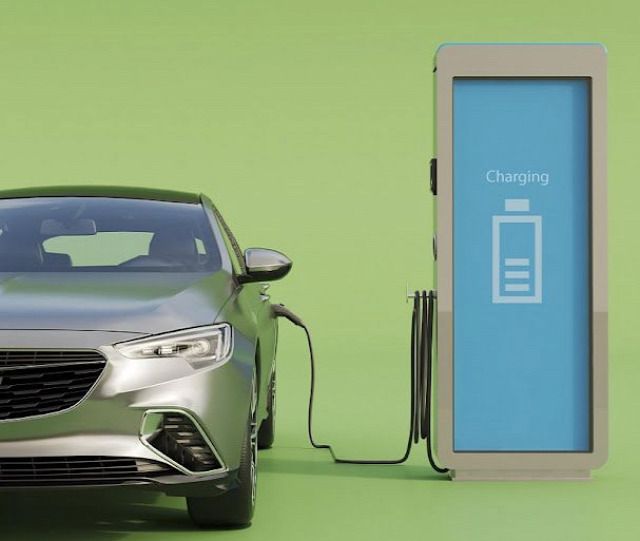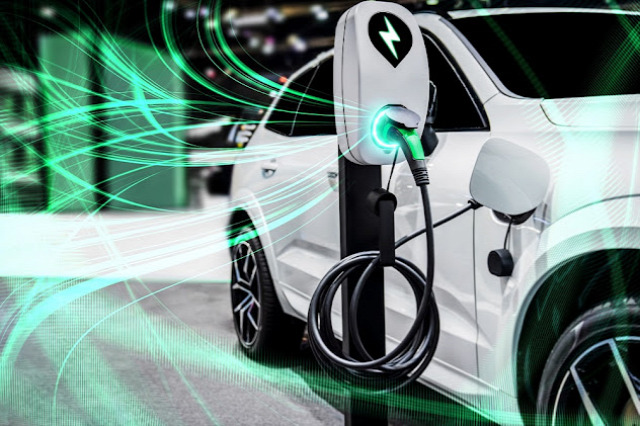
In the wake of climate change concerns and a global push towards sustainable transportation, the electric vehicle (EV) industry has witnessed exponential growth. One crucial component driving this evolution is the sophisticated network of sensors embedded within these vehicles. Electric vehicle sensors are the silent heroes behind the scenes, enabling everything from efficient battery management to advanced driver-assistance systems (ADAS). As the world shifts gears towards electrification, the electric vehicle sensors market is poised for significant expansion. The electric vehicle sensors market was valued at $4.55 billion in 2023, and it is expected to grow at a CAGR of 15.14% and reach $18.64 billion by 2033.
Understanding Electric Vehicle Sensors
Electric vehicle sensors serve a multitude of purposes, ranging from monitoring battery health and optimizing energy consumption to enhancing safety features. Some of the key sensor types include:
-
Battery Management System (BMS) Sensors: BMS sensors are pivotal in managing the performance, health, and safety of the battery pack. They monitor parameters such as temperature, voltage, and current flow within individual cells to ensure optimal operation and prevent overheating or overcharging.
-
Position Sensors: Position sensors play a crucial role in various vehicle systems, including throttle control, pedal position sensing, and gearbox positioning. They provide accurate feedback on the position of mechanical components, facilitating precise control and efficient operation.
-
Temperature Sensors: Electric vehicles rely on temperature sensors to monitor and regulate the temperature of critical components such as motors, inverters, and battery packs. These sensors help prevent overheating and ensure optimal operating conditions, thereby enhancing the lifespan and performance of key systems.
-
Proximity Sensors: Proximity sensors enable advanced driver-assistance features such as parking assistance, collision avoidance, and autonomous emergency braking. By detecting nearby objects and obstacles, these sensors enhance safety and provide drivers with crucial information to avoid accidents.
-
Current Sensors: Current sensors play a vital role in monitoring the flow of electrical current within the vehicle's powertrain and auxiliary systems. They ensure efficient energy utilization, prevent overloads, and facilitate precise control of electrical components.
Electric Vehicle Sensors Market by Power Source
- Battery Electric Vehicles (BEVs)
- Hybrid Electric Vehicles (HEVs)
- Plug-In Hybrid Electric Vehicles (PHEVs)
Request A Free Detailed Sample on Electric Vehicle Sensors Market!
Market Trends and Growth Drivers
The electric vehicle sensors market is witnessing rapid expansion, driven by several key factors:
-
Increasing Demand for Electric Vehicles: With growing environmental awareness and government incentives promoting electric mobility, the demand for electric vehicles is on the rise. This surge in demand directly translates to a higher need for electric vehicle sensors to support the expanding fleet of electric cars, buses, and trucks.
-
Advancements in Sensor Technology: Technological advancements have led to the development of more compact, accurate, and energy-efficient sensors. Innovations such as MEMS (Micro-Electro-Mechanical Systems) sensors and solid-state LiDAR (Light Detection and Ranging) are revolutionizing the electric vehicle sensor landscape, enabling enhanced performance and functionality.
-
Emphasis on Vehicle Safety and Autonomous Driving: Safety remains a top priority for automotive manufacturers and regulators alike. Electric vehicle sensors play a crucial role in enabling advanced safety features such as adaptive cruise control, lane-keeping assistance, and automatic emergency braking, driving the demand for sensor-equipped vehicles.
-
Government Regulations and Emission Standards: Stringent emission regulations and fuel economy standards are compelling automakers to invest in electric and hybrid electric vehicles. Electric vehicle sensors play a vital role in meeting these regulatory requirements by optimizing energy efficiency, reducing emissions, and enhancing overall vehicle performance.
Challenges and Opportunities
While the electric vehicle sensors market presents lucrative opportunities, it also faces several challenges:
-
Cost Considerations: The high cost of advanced sensor technologies remains a significant barrier to widespread adoption, particularly in the context of electric vehicles aimed at mass-market consumers. Manufacturers are continually striving to balance performance and affordability to make electric vehicles more accessible to a broader audience.
-
Complexity of Integration: Electric vehicles comprise numerous interconnected systems, each requiring specialized sensors for monitoring and control. Integrating these sensors into the vehicle's architecture while ensuring seamless interoperability poses challenges for manufacturers, requiring careful design and testing processes.
-
Reliability and Durability: Electric vehicles operate in diverse environmental conditions, from extreme temperatures to rough terrain. Ensuring the reliability and durability of sensors under such conditions is essential to maintaining vehicle performance and safety over the long term.
-
Data Security and Privacy Concerns: As electric vehicles become increasingly connected and autonomous, data security and privacy emerge as critical concerns. Sensor data, including vehicle location, performance metrics, and driver behavior, must be safeguarded against unauthorized access and misuse.
Despite these challenges, the electric vehicle sensors market presents immense growth opportunities for manufacturers, suppliers, and technology providers. By investing in research and development, forging strategic partnerships, and addressing key market needs, stakeholders can capitalize on the burgeoning demand for electric vehicle sensors and contribute to the advancement of sustainable mobility.
Electric Vehicle Sensors Market by Region
In the Asia-Pacific region, the electric vehicle sensors market is witnessing substantial growth, driven by the rapid uptake of electric vehicles in economically advanced countries like China, Japan, and South Korea. According to the International Energy Agency (IEA), China accounted for about 60% of all new global car registrations in FY2022, underscoring its significant role in driving market expansion.
Moreover, the Asia-Pacific region serves as a focal point for numerous EV manufacturers such as BYD, SAIC, Nio, Nissan, Hyundai, and Toyota, further amplifying market dynamics. Emerging economies like India and Malaysia are also making notable progress in the electric vehicle sensors market, supported by robust government initiatives promoting renewable energy adoption. This surge in activity is propelling overall sector growth, signaling a promising trajectory for sustainable transportation adoption.
Some of the prominent names in the electric vehicle sensors market are:
- Allegro MicroSystems, Inc.
- Amphenol Advanced Sensors
- ams Osram AG
- Analog Devices, Inc.
- Denso Corporation
- Infineon Technologies AG
- Kohshin Electric Corporation
Get Detailed Insights on EV Market Research Reports
Conclusion
Electric vehicle sensors are indispensable components driving the evolution of electric mobility. From enhancing safety and performance to optimizing energy efficiency and battery management, these sensors play a pivotal role in shaping the future of transportation. As the electric vehicle market continues to expand, the demand for advanced sensor technologies will only grow, presenting exciting opportunities for innovation and market growth. By addressing key challenges and leveraging emerging technologies, stakeholders can accelerate the transition towards a cleaner, safer, and more sustainable transportation ecosystem.





